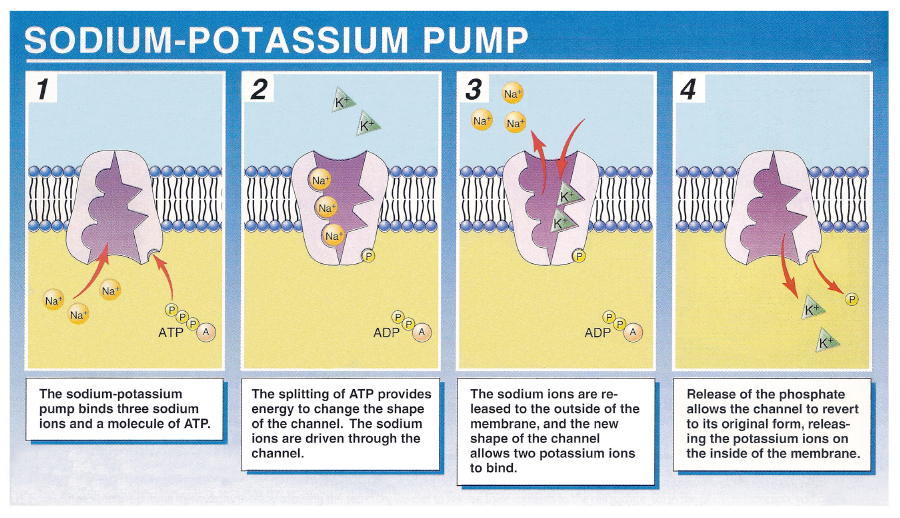How does the sodium-potassium pump work?
1 Answer
The sodium-potassium pump uses active transport to move molecules from a high concentration to a low concentration.
Explanation:
The sodium-potassium pump uses active transport to move molecules from a high concentration to a low concentration.

The sodium-potassium pump moves sodium ions out of and potassium ions into the cell. This pump is powered by ATP. For each ATP that is broken down, 3 sodium ions move out and 2 potassium ions move in.
In more detail:
Sodium ions bind to the pump and a phosphate group from ATP attaches to the pump, causing it to change its shape. In this new shape, the pump releases the three sodium ions and now binds two potassium ions. Once the potassium ions are bound to the pump, the phosphate group detaches. This in turn causes the pump to release the two potassium ions into the cytoplasm. The video shows this process with an animation and text.
To read more, see this link.

